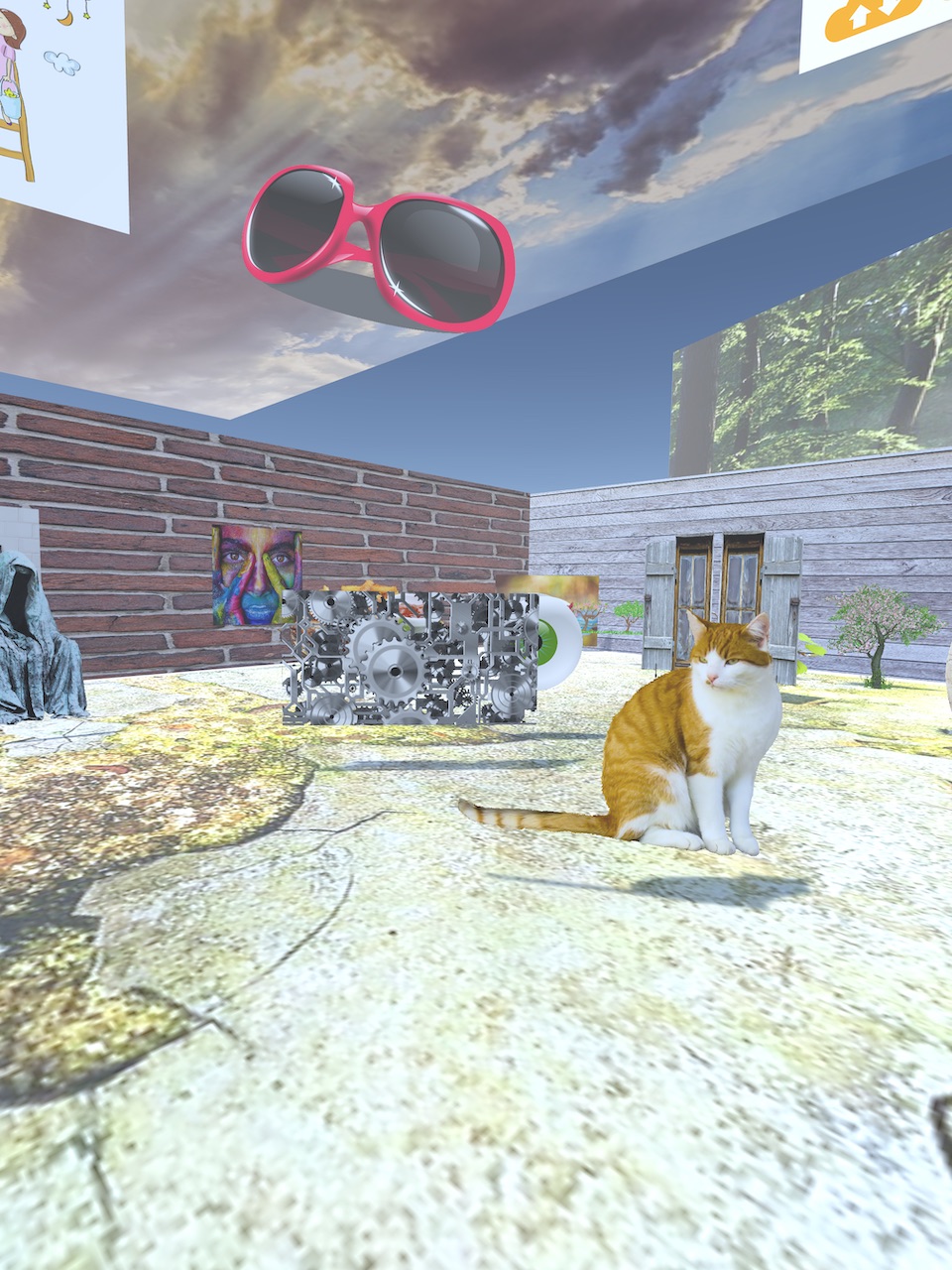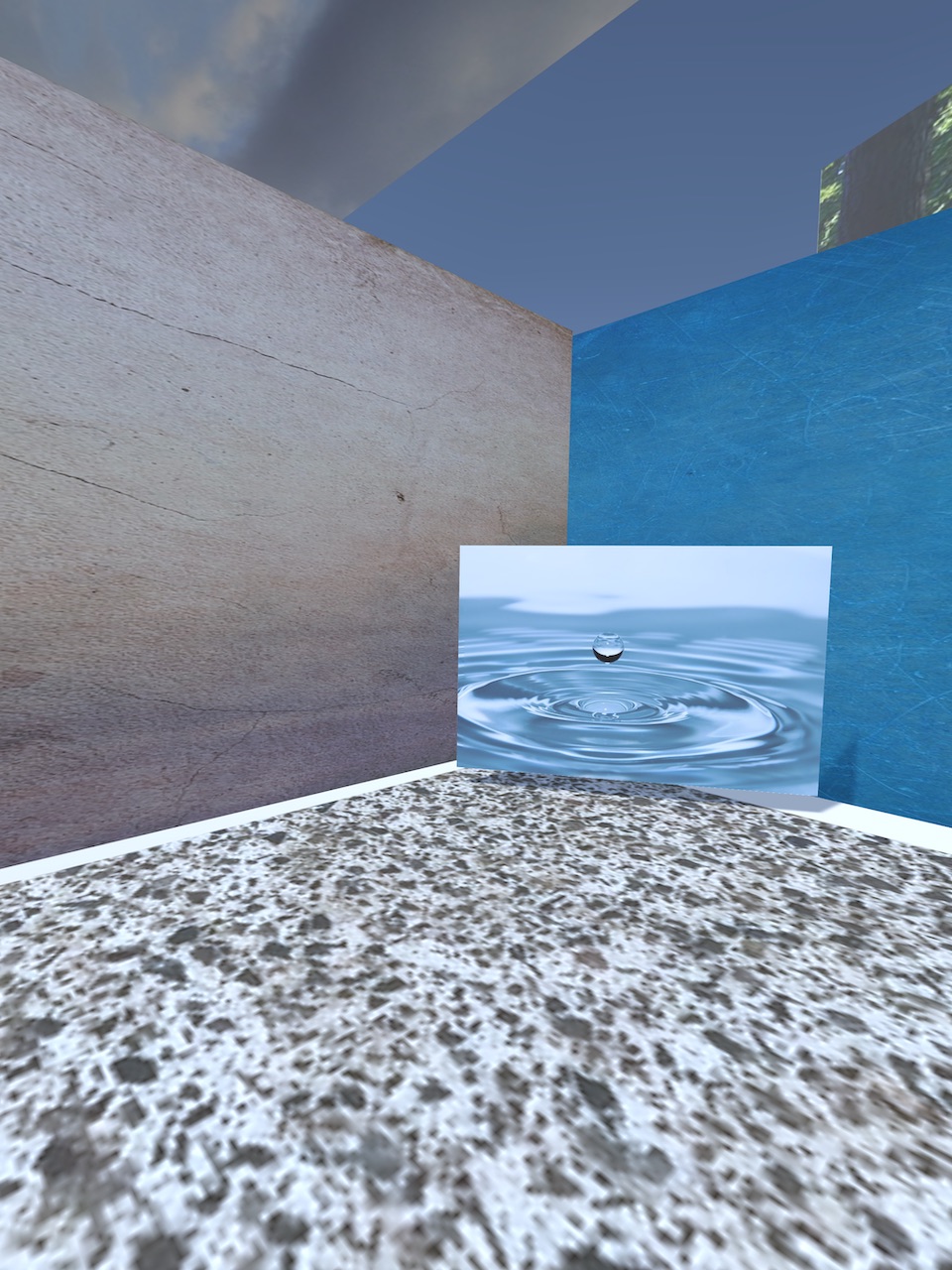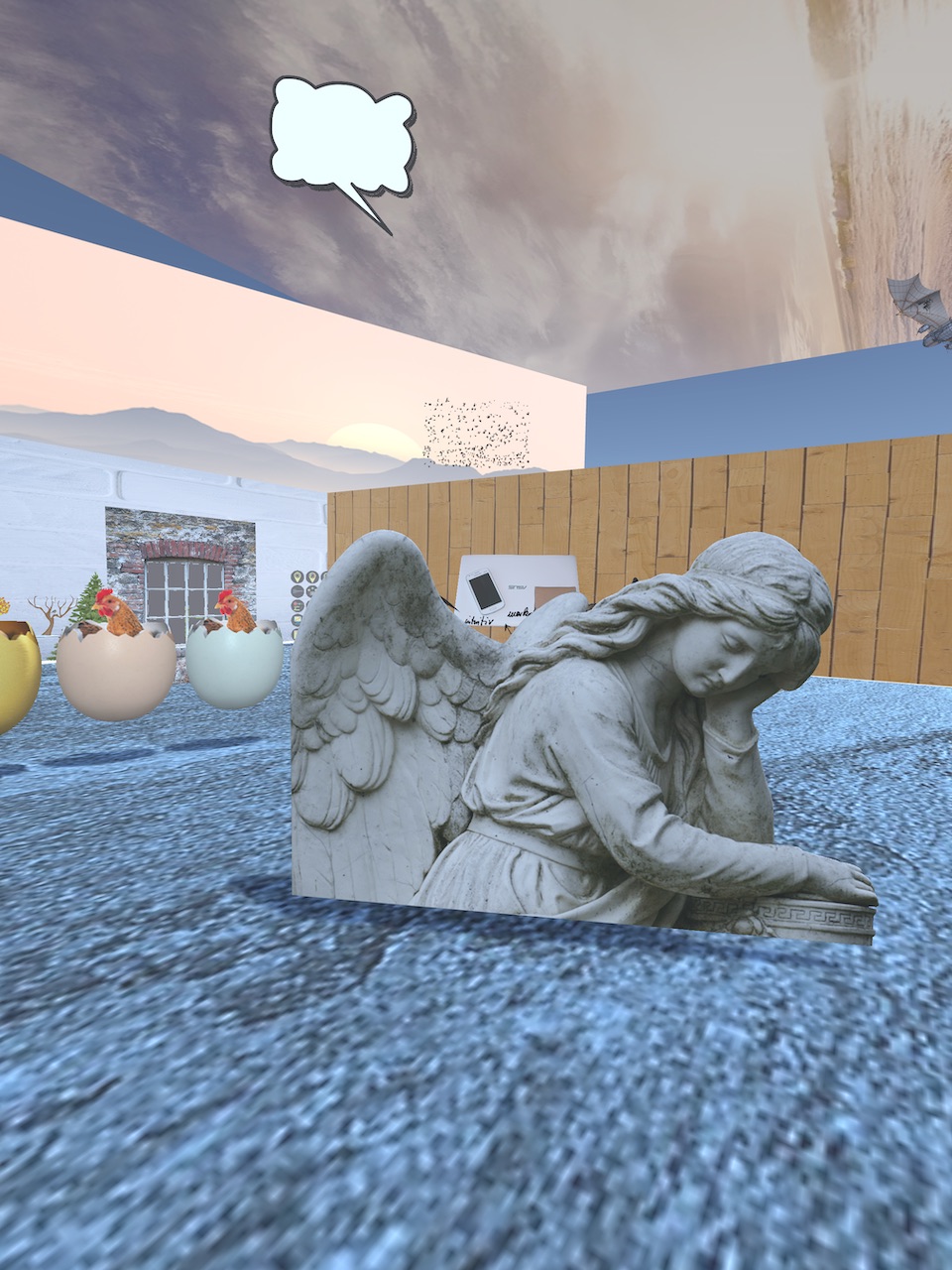WYSIWYS
"What You Search Is What You See" 2019 Akihiko Taniguchi
We may be looking at the world through image search.
WYSIWYS is a Virtual Photography Environment by Image Search.
Image search with keywords placed in 3D space.
And these image can be seen by shooting with a virtual smartphone.
Photos are saved in your Desktop.
Works made for yet-magazine issue #11. Curated by Marco De Mutiis
Download
For macOS OSX.zip
For Windows WIN.zip
Sample






As you enter the exhibition space, you find yourself surrounded by a blinding whiteness interrupted
by floating words. You read smartphone, landscape, concrete floor texture. The space around you is enclosed by clean architectural drawings, filled with measurements of floors, outlines of doors, stylised tress and empty wall surfaces that close the perimeter of the venue. You look down, only to find your feet inside someone else’s shoes. You are wearing a pair of brown trousers and a red sweater you don’t remember owning. As you press the ‘W’ key on your computer you start walking.
You are walking in Akihiko Taniguchi’s shoes, or rather his 3D avatar, which the artist created by scanning himself in 2015. As you get comfortable in your new body, you further explore the landscape of words
that surrounds you: what you see is what you search. You now press ‘V’ and reach for your pocket, where you take out an iPhone and point it to the space in front of you. You look at the screen as you take a picture, only to find the words in front of you replaced by a cluster of images. The textual elements are in fact keywords that are turned into pictures in real time by an online image search engine, being translated only through the mediation of the smartphone camera app in your pocket. The transparent space and the text landscape are suddenly transformed into a colourful assemblage of clashing images, only appearing on the smartphone screen and in the picture you just took and saved. The exhibition space is turned into the inside of a camera obscura processing a photograph, but an algorithmic and computational one that re-
flects the hidden infrastructure and code layers that regulate digital and networked photographs today.
It’s a playful yet subtly unsettling act, revealing how our daily visual experiences are increasingly mediated through indexes and categorisations defined by internet services and corporations that decide what a landscape, a cat or a tree must look like. It turns the photographic act of capture into the only way of seeing images and reminds us that this is in fact one of the most common resources we access to check what something looks like. Through the algorithms of internet image searches our vision and our minds are programmed to under- stand a normative and uniform image of what is accept- able as a visual definition of sky, window or camera. Finally, What You Search Is What You See may also suggest that the act of looking can be equated to that of taking pictures with smartphone camera apps, an activity so ubiquitous that it replaces vision entirely. Or perhaps it’s only without the photographic filters that we can see beyond the representational layer, navigating through the floor plans of complex inner data structures as if adventuring through the aseptic Google data servers, following the submarine fibre optic cables that distribute our images, or venturing through the jungle of rules that determine the indexes of image search engines. Is it only when
we put away our cameras and are denied access to the world of images that we are able to See What We Search?
What You Search Is What You See can be downloaded here for Mac and Pc: http://okikata.org/wysiwys/
Marco De Mutiis
YET magazine issue #11 - Curating Photography
https://yet-magazine.com